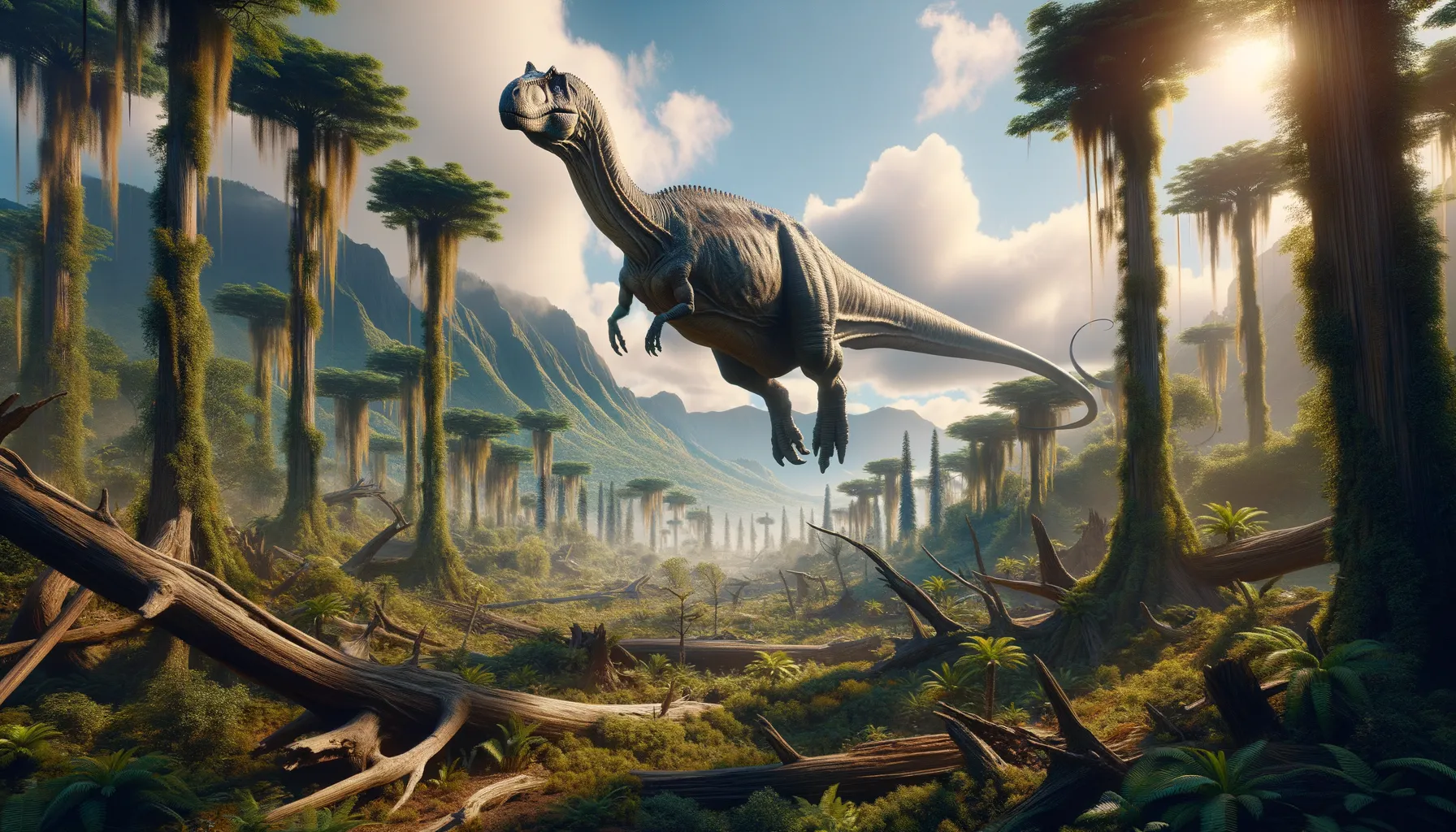
Barosaurus
Giant of the Jurassic skies and trees.
Period
Jurassic
Length
Could reach lengths of 26 meters.
Height
Approximately 15 meters tall.
Weight
Weighing up to 20 metric tons.
Barosaurus was a massive herbivorous dinosaur known for its long neck, which allowed it to reach vegetation high in trees. Living during the Jurassic period, this sauropod was part of a group known for their enormous sizes. Fossils have mainly been found in North America, providing insight into the diverse ecosystems of the time. Its long neck and tail were its most distinguishing characteristics, making it one of the giants of its era.
Diet
Barosaurus was an herbivore, primarily feeding on plants. Its long neck enabled it to browse on a wide range of vegetation, including high branches that were out of reach for many other herbivorous dinosaurs. The massive size and height of Barosaurus allowed it to access diverse food sources in its environment.
Hunting
As an herbivore, Barosaurus did not engage in hunting. It relied on foraging for plant material available in its habitat. Its primary focus was consuming enough vegetation to sustain its immense size.
Environmental challenges
Barosaurus faced environmental challenges such as finding sufficient food to sustain its large body. It had to compete with other herbivorous dinosaurs for resources. Changing climates and natural events could affect the availability of its food sources, making survival a continuous challenge.
Speed
Barosaurus was likely slow-moving.
Lifespan
Estimated to live around 70-100 years.
First discovery
First discovered in the late 19th century in North America.
Fun Facts
- The Barosaurus was a long-necked dinosaur that lived during the Late Jurassic period, about 150 million years ago.
- It was a massive herbivore, estimated to be about 80 feet long, making it one of the longest dinosaurs known.
- Barosaurus belonged to the sauropod family, which includes other giants like Brachiosaurus and Apatosaurus.
- Its name means 'heavy lizard' due to its enormous size and robust build.
- Unlike some other sauropods, the Barosaurus had a relatively short tail compared to its extremely long neck.
- Fossils of Barosaurus have mostly been found in North America, particularly in places like South Dakota and Utah.
- Barosaurus likely used its long neck to reach high vegetation, similar to how giraffes feed today.
Growth and Development
Young Barosaurus were likely much smaller than adults and underwent significant growth before reaching maturity. Growth involved changes in size and possibly habitat preferences as they aged. As they developed, they would have moved to areas with abundant food to support their increasing body size.
Habitat
Barosaurus inhabited floodplains and open woodlands where it could find enough vegetation. Its habitat offered a variety of plant life to support its dietary needs. These environments provided the space needed for such large creatures to move and thrive.
Interaction with other species
Barosaurus interacted with various species within its ecosystem, including other herbivorous dinosaurs and predators. Its sheer size likely deterred many smaller predators. It may have lived in groups, providing some level of social structure against threats.
Natural lifespan
Barosaurus could live up to 100 years naturally.
Reproduction
Barosaurus likely laid eggs, as with other sauropods. The reproductive process would involve finding safe nesting grounds to protect the eggs from predators. Once hatched, the young were vulnerable and required significant growth to find safety in size.
Social behaviour
Barosaurus may have lived in herds, as sightings of multiple specimens together suggest. Herd living provided protection against predators and improved chances of finding food. Social structures could have been important for migration and survival strategies.
Fossil locations
Barosaurus fossils have primarily been found in North America, particularly in the Morrison Formation. This area is rich in dinosaur fossils from the Jurassic period. The discovery of numerous remains has provided significant insights into its anatomy and lifestyle.
